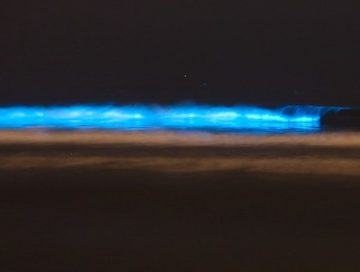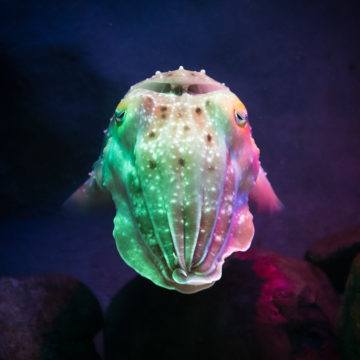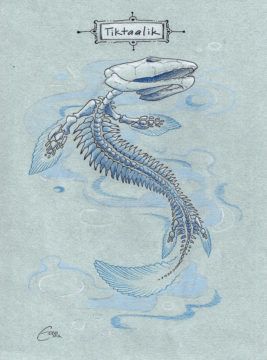by Mike Bendzela

How would you account for the following weird experience? Do you have a handy explanation, or do you dismiss it outright?
When I was twelve, Dad used to drop me off in the twilight in front of the parish across town to serve Mass, usually a Wednesday before dawn, because that was the time new altar boys served their shifts.
“Pray for me,” Dad would say as I got out of the car, “and for your poor mother’s soul.” He parked the car far down the block and sat there in the dark waiting for me to return from Mass — swigging whisky, I now assume, from his paper bag all the while.
The time I spent with my fellow altar boy, Michael, was a refuge from the horrors of home. We got dressed together, laid out brass artifacts and towels and books together, lit candles together. The priest who had my dad excommunicated was more than kind to me, and groomed me for the priesthood with effusiveness and, I saw later, with the intent to elevate me above my fallen parents. I didn’t want to leave the sacristy; I didn’t want to go back to my dad’s car; I wanted to camp out there with Michael, forever. Perhaps he and I could both become priests and secretly live there in the rectory. I even passed this by Father Frank.
He looked at me with something like triumph and affection. “It is not outside the realm of possibility,” he said.
After Mass, I nearly flew back to the car.
Once I was inside, dad asked, “Did you pray for us?”
I stared blankly. In my excitement about moving into the church with Michael, I had forgotten all about my ritual prayer for my parents.
The back story was something I would only learn much later from an aunt: During a rough spot in their marriage, my mother had become pregnant by another man, and Dad decided she should have an abortion (then illegal in our state); he took her where she could get one, and she died of sepsis. My father was consequently forbidden from setting foot in the Catholic Church he was raised in, even though he was prostrate with grief and remorse. He could do nothing to assuage the pain, not even drink it away.
“Do you want us to spend eternity in hell?” he got out. He then burst into tears there behind the steering wheel. I fled the car and ran into the dark, pre-dawn Maine woods behind the church. He called my name and came after me. I knew that I could not outrun my father, so I did not run very fast.
At a black iron gate that blocked my flight, my father cornered me. These woods were full of mature pines, and father stooped to pick up a fallen branch. He brought the branch down on my shoulder, but it was rotted and broke in half.
As he stood with the broken stub in his hand, I gripped my shoulder in pain and horror. Then we both saw it at once, on the end of the broken branch: a perfectly regular elliptical ring of light, fully as bright as fire, a white and slumbering halo. He cried out and dropped the stub.
Looking about me, I saw that the broken end, too, presented a regular ring at the end, a second halo aglow along the log. We both knew these were portents.
My father stood agape as he beheld the companion halos and fell to his knees. He begged me to forgive him. This made a believer of me more than ever.
I promised myself that, when I became a priest, I would do whatever I could to get both of my parents into heaven.
*
Would you, like my friend the molecular biologist, be quick to say: “Bioluminescence. There are luminescent fungi that can infect rotting wood and create that effect”?
I might just paraphrase Thoreau: “Your science puts me to sleep.”
Or would you, like others, just dismiss the story as a product of my imagination?
You should, as I have made the whole thing up. It’s complete bullshit — fiction writing.
My mother currently lives, not in Maine, but in Toledo, Ohio; and my father, a kind, un-tormented man, lived with her right up until his death last July 2, after 63 years of marriage.
I was indeed a server until about the age of twelve, but I had zero ambitions of becoming a priest. I stole the stuff about the glowing stick from Thoreau. The italicized passages are direct quotations from his travelogue, The Maine Woods.

Before you abandon me in disgust: Please realize that it could have been much worse. I could have pulled a Saul of Tarsus—or a Joseph Smith—and actually believed my own bullshit in order to better convince you to believe. I simply want to depict the power of anecdote to make us believe in the patently untrue. As Harry Frankfurt has said, “The bullshitter is faking things. But this does not mean that he necessarily gets them wrong.” The point here is to recognize that it is bullshit.
I chose the Thoreau passage about the glowing stick in particular because of its egregious mysticism. In Maine Woods, when he comes upon the “phosphorescent” glow, he pretty much loses his mind:
I let science slide, and rejoiced in that light as if it had been a fellow-creature. I saw that it was excellent, and was very glad to know that it was so cheap. A scientific explanation, as it is called, would have been altogether out of place there. That is for pale daylight. Science with its retorts would have put me to sleep; it was the opportunity to be ignorant that I improved. . . . It made a believer of me more than before.
I discovered the bit about bioluminescent fungi, Thoreau’s dreaded explanation, on the Internet. Learning that the chemical process that causes such fungi to glow is like that in lightning bugs and luminous sea creatures does not put me to sleep. Instead, it thrills me. It is a phenomenon the young Charles Darwin encountered multiple times during his sailing trip around the world, and his account is tellingly different than Thoreau’s.
*
When I mentioned to a colleague of mine, a Thoreau scholar, that I was reading The Maine Woods, she responded, “Now that’s a slog.” It is indeed tough to get through, and in many respects Darwin’s The Voyage of the Beagle is another such slog. It’s difficult to stick by him while he meditates for pages over “masses of flocculent matter” floating on the sea. But I keep returning to Darwin’s book because it documents the development of one of the most original minds ever to stalk our planet.
Darwin’s observations on “phosphorescent” (now properly termed “bioluminescent”) life, which he encountered in several different forms, are pleasingly stripped of mysticism, romanticism and sentimentality, the deplorable triad which many nature writers like Thoreau find themselves enmeshed in.

Darwin’s first encounter with the phenomenon occurs with a “cuttle-fish” he caught in “St Jago” (Santiago): “I observed that one which I kept in the cabin was slightly phosphorescent in the dark.”
This tendency to note without comment is maintained when he catches fireflies in Rio de Janeiro, which creatures he carefully dissects and “irritates” along their “abdominal rings”:
The shining matter was fluid and very adhesive: little spots, where the skin had been torn, continued bright with a slight scintillation, whilst the uninjured parts were obscured. When the insect was decapitated the rings remained uninterruptedly bright, but not so brilliant as before: local irritation with a needle always increased the vividness of the light. The rings in one instance retained the luminous property nearly twenty-four hours after the death of the insect.
Darwin is content to let the observation stand as an occasion for wonder, whereas Thoreau, encountering a similar phenomenon with the glowing ring of dead wood, cannot resist making it an occasion for his own breathless stupefaction and Wordsworthian wonder:
I was in just the frame of mind to see something wonderful, and this was a phenomenon adequate to my circumstances and expectation, and it put me on the alert to see more like it. I exulted like “a pagan suckled in a creed” that had never been worn at all but was bran new, and adequate to the occasion.
Darwin gets the opportunity aboard the Beagle to float in a whole sea of bioluminescence when, off the coast of Patagonia, “The vessel drove before her bows two billows of liquid phosphorus, and in her wake she was followed by a milky train.” He then catalogs a series of “luminous” encounters, associating them with “various animals” and “gelatinous particles,” which, alas, because of his ignorance of chemiluminescence, leads him to a conclusion that is about as wrong as Thoreau’s:
. . . I have always been inclined to consider that the phosphorescence was the result of the decomposition of the organic particles, by which process (one is tempted almost to call it a kind of respiration) the ocean becomes purified.
While Darwin’s explanation is wrong, it is still several notches above Thoreau’s “spirits” and “will-o’-the-wisps.”
If Thoreau wants to eschew “pale daylight” and welcome “the opportunity to be ignorant,” he can have it. For him, “to see something wonderful” requires the preemptive rejection of science. He’d rather have the “honest spirits” that proliferate under ignorance than “the empty chamber” of explanation. I imagine Darwin would find such resolute mysticism, which is the banishment of comprehension, utterly repugnant.
I love explanations—I find them “excellent”—especially the ones in current psychology and neuroscience that tell us how weak, deluded and gullible we all are. One of the most exasperating, most charming bugs in our systems is our tendency to swallow anecdotes whole.
*
The story of my actual involvement with the Church goes something like this:
At 5:30 in the morning, on a school day late in the fall, my father drops me off in front of Good Shepherd Parish, in Toledo, Ohio, to serve 6 a.m. Mass, the purview of newly trained acolytes. It is barely daylight, and a few crickets expend themselves in the shrubbery against the stone flanks of the cathedral. I knock on a door off the asphalt parking lot-slash-playground and am admitted by the priest into the sacristy. There my server companion, also named Michael, and I prepare for the sacred Mass, to be held for an audience of just two old women dressed in black, seated near the front of the church, the rest of the Romanesque nave swathed in darkness.
It was as exciting as getting into costume for the first performance of a play. But all that remains with me today are impressions: the airy, vaulted chamber of the sacristy; locked drawers and ornate cabinets; bags of hosts and bottles of wine; black and white robes and surplices of all sizes hanging on racks; stacks of fat books. Out there, beyond the thick, round-topped archway, lies the stage, consisting of bright lights on white marble, gilt-colored statues of Holy men, tables full of brassy goblets and glassware.
Michael and I light wicks on the ends of long poles and go out and touch these wicks to the candles ranked around the priest’s table. We set out chalices and platters and books, lay out cloths, position bells. When all is prepared, the three of us—the priest and two servers (we never used the term “altar boys”)—walk out to begin the show. We all know our lines by heart, know each and every cue to sit and stand and kneel, to hold this book or that platter. There must have been a training period for all this, but I remember none of it.

I do remember Father Frank as a somewhat remote, dignified, and very kind old man, who tolerated my foibles during the sacred Mass. I remember that the other Michael had dirty-blond hair that hung very straight around his face, that he had big white teeth, and that–while this was before my loins matured and sprouted forth that terrible flower, lust–I wanted to kiss him all over his pink face.
When Father pauses in his speech and hoists the white wafer aloft, Michael lifts the cluster of bells beside him and shakes it vigorously, filling the whole nave with a harmonic jingling that echoes off the recesses and statuary and hangs in the air for whole seconds, like slowly dissipating fog.
One moment is inscribed in my memory as the representative religious experience for me, displacing dozens of other moments that must have occurred during those years that I served at the church but which have dissipated: We are standing there before the altar, the three of us—Michael, priest, Michael—facing the two old women in attendance, as the priest speaks to the nearly empty church; then he half-turns his head towards me and says gently: “The big green book.”
I stare into the darkness. I immediately recall leaving the big green book sitting on the wooden table inside the sacristy. I look helplessly toward Father.
“Get the big green book, please.”
Breaking script, I pace across the altar—remembering to turn, face the ornate altarpiece, and studiously genuflect—then I continue into the sacristy. One, two, three beats later . . . I emerge with the big, green book under my arm. I turn once more toward the altarpiece and bend my knee. Then I step in front of Father, hold the book up to him, let him open it to the page marked with the red ribbon, and hold it aloft while he reads.
And this is the extent of my experience with mysticism, with religion. It amounts to a vast performance during which I missed my cue.
Seeing as I’ve already damaged your trust, how much of this story do you think is true? Should you believe it? Science says to at least be cautious. I would have to admit, reluctantly, that as careful as I’ve been about recreating this story, trying to get it all right, I cannot corroborate any of it. I have had to rely entirely on memory, which psychologists now tell us is inherently fluid and unreliable. There is much that is “wrought,” so that there is no way of knowing how much distortion has occurred in the telling of the story, how much confabulation, how much inference, how much supplementation. For goodness’s sake: crickets in the shrubbery? I doubt that really happened.
*
There are those who say there needs to be a rapprochement between science and religion. Well, fine. Something must happen, because, contrary to my earnest wishes, religion ain’t going away. If the failure of Christ to return in 1844 (“The Great Disappointment”) didn’t deter the Millerites (now “Seventh-day Adventists”), then it’s unlikely that an entity as abstract as “Science” will ever deter the even-more-nebulous concept, “Religion.” But if religion ain’t going away, it can at least make itself tolerable to the modern world and science.
The most compelling feature of religion is not its inane rituals, nor its implausible stories, nor its crappy beliefs, but its comprehensive universality. From our neanderthalensis cousins burying their dead with flowers, to Scientologists imparting the myth of Xenu, the religious impulse is undeniably part of the human organism.
But for “harmony” to happen between science and religion, there are going to have to be some rules, and the chief rule should be this: Each side must do its utmost to purge the bullshit from its viewpoint. Science already does this through hypothesis testing and peer review. There are virtually no creationists among biologists anymore. The homunculus has gone the way of the dodo. The demonic-possession theory of mental illness is extinct in the medical world. Oedipus Complex, Schmoedipus Complex. Science evolves. New facts overturn former beliefs.
Yet, among the religious, Moses still parts an ocean with a stick, Muhammad still pilots a horse to heaven, and Jesus still climbs out of his tomb. While science aspires to understand and account for human vanity, human frailty, and human delusion, religion instead embraces these and calls it Revelation.
Science strives for consilience among its branches, but religion would seem to do the opposite: It isn’t even compatible with itself, let alone with science. Is there any matter of doctrine that the major religions agree on to the same extent that chemists agree on the laws of physics, molecular biologists agree on the rules of chemistry, evolutionists agree on the principles of molecular biology, and psychologists agree on the tenets of evolution?

If religion is to adapt to the modern world and persist, it will have to pluck the talking snake and Leviathan from its arches and domes and replace them with Tiktaalik and Australopithecus. If religion wants science to roam its halls, it will need to embrace the stages of evolutionary development instead of the Stations of the Cross.
Let the double helix be the new scroll, and let the firmament glow—with white dwarfs, and red giants.
_________________________________
Images
“Red Tide Bioluminescence in San Diego” by Kevin Baird is licensed under CC BY-NC-ND 2.0.
“Cuttlefish” by Peter Hellberg is licensed under CC BY-SA 2.0.
Good Shepherd Parish, “DSC_97479616” by Don Johnson 395 is licensed under CC BY-ND 2.0.
“Tiktaalik” by d i l l w e e d is licensed under CC BY 2.0. Drawing by Sarah (Ecco) Pierce. A creature much like Tiktaalik, circa 375 million years ago, was the progenitor of all tetrapod life on Earth.
Book photos by the author.
